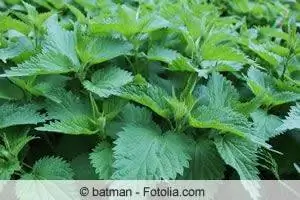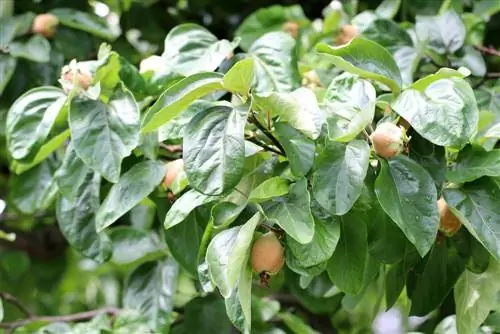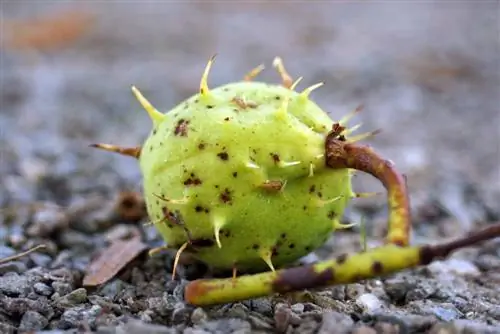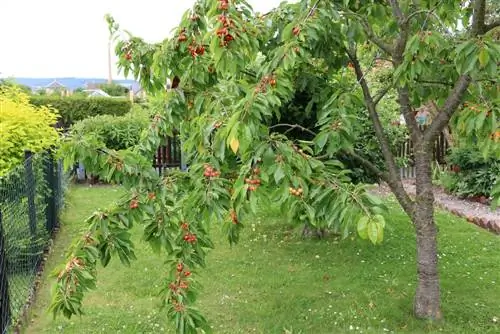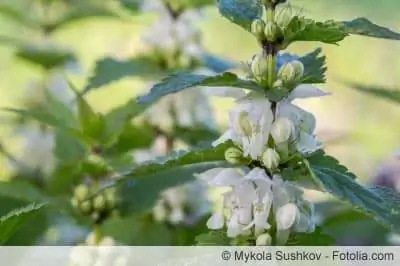- Author admin [email protected].
- Public 2023-12-17 03:39.
- Last modified 2025-06-01 06:48.
The large nettle (Urtica dioica) and the small nettle (Urtica urens) are much more than weeds that have no place in the garden. The wide range of possible uses, from tasty soup to diuretic tea to natural pest control, make the apparent weed a valuable part of our gardens. Nettles should therefore be harvested and used in many ways. Here we give you valuable tips for harvesting and use.
Big nettle - profile
The large nettle (Urtica dioica) is a strong, herbaceous plant. As protection against predators, stinging hairs grow on the leaf stems, which release silicic acid-containing substances when touched, causing hives and itching on human skin.
- Growth heights between 30 cm and more than one and a half meters
- angular stems with opposite leaves
- Flowering period from July to October
- strong root growth, develops impressive hosts
- Flowers develop inconspicuous flower spikes
The flowers develop into nettle seeds, which can be pressed into oil or roasted. The nettle has also long been known for its fiber production, which nowadays only takes place sporadically. Nettle fabrics are considered pleasantly soft. They are also suitable for allergy sufferers.
Small nettle - profile
The small nettle (Urtica urens) is an annual plant that often appears in rubble sites, near dung heaps or in vegetable crops.
- Leaves are smaller and rounder than those of the nettle
- grows in groups of individual plants
- prefers nitrogen-rich soil
- Growth height 10 to 60 cm high
- Stinging hairs burn more strongly than those of their larger relatives
- propagates through wind pollination.
The plant can be used as a whole, young leaf sprouts make a tasty, vitamin-rich salad, infusions from the leaves and roots are considered diuretic. The foliage is used as fodder, fertilizer and for pest control. Traditionally, finely chopped nettle is a good feed that is particularly used for raising chicks.
Tip:
Add young nettle leaves to the popular vegetable smoothies. You get a fresh, he althy juice that also tastes delicious.
Substrate and soil
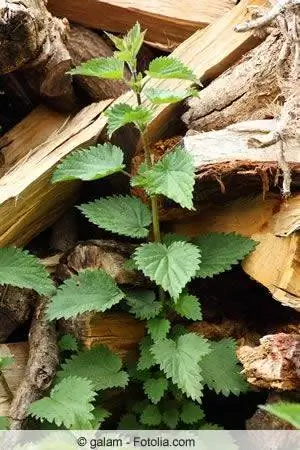
The nettle grows almost anywhere where the soil is rich in nitrogen. Both varieties prefer shade rather than full sun, but can cope with almost all lighting conditions. They are often found near unused properties, such as barns, unoccupied houses, piles of rubble or vegetable patches that are heavily fertilized. In our garden, care must be taken to ensure that the hosts of the large nettle do not affect the vegetable plants. The plants are also a popular feeding place for butterfly caterpillars, which can also lead to irritation in the vegetable patch when the caterpillars switch to vegetable plants. If you want to cultivate nettles, be careful of caterpillar infestation. However, they can be easily collected.
The large nettle can be sown directly into the ground as seeds. However, since it reproduces very quickly through its own root growth, planting an existing or shared host is much easier. In order to limit the growth of plants, the soil around the plant should be loosened regularly. The excess rhizomes (root shoots) are then pulled out of the ground, so it remains limited to a certain area.
Tip:
Since peacock butterflies and small tortoiseshells in particular feed almost exclusively on nettles and these butterfly species are considered rare, you can simply tolerate a few caterpillars.
Plants and Harvesting
In principle, nettle plants should not be harvested without gloves. Especially in the small species, contact with the stinging hairs is often accompanied by painful wheals and severe itching.
Large and small nettles can be harvested at almost any time. In spring, the young, tender plants serve as welcome vegetables in the kitchen for many dishes.
In order to defuse the stinging hairs so that the leaves can be used without regret, it is advisable to first cut off the plants using long gloves for normal household quantities. Then they can be placed in a kitchen towel or towel and simply rolled up with the fabric. A little wringing also loosens the last little heads that contain the burning silica. The leaves can now be safely processed further.
Harvest time and use
The leaves are used in cooking for tasty dishes and as tea. Here we recommend harvesting from early spring, around May, with the very young shoots right through to the flowering period. Flowering nettles no longer taste as good and can easily become fibrous.
Oil can be made from the seeds. Nettle oil is a high-quality vegetable oil, but it is rarely produced and offered. If you want to grow it yourself, you should only harvest the ripe seeds, i.e. from around October. It has a greenish color and a smell reminiscent of fresh carrots.
The dried nettle straw can be made into fabrics. Nettle cloth was made several thousand years ago from the bast fibers of the nettle. The harvest time for this is also October, when the plant is fully grown. The long, extremely tough fibers are ideal for making strong fabrics, fishing nets or ropes. Before cotton was used here, nettle cloth and linen (made from flax) were widely used.
The roots are used as tea. They should only be harvested in the second year of growth; the harvest time is late autumn. The roots are dug up, cleaned and cut into small pieces. They can be used dry or fresh.
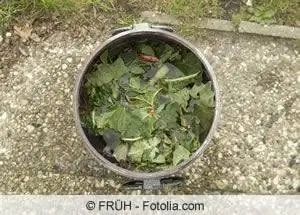
Large and small nettles are equally welcome as fodder plants. It contains a lot of nutrients, minerals and trace elements. The plants can be harvested two to three times a year for fodder purposes, for example in July and September. They are indispensable as feed for raising animals.
Both types of nettle serve as a natural pest control agent. Manure made from it can be used anywhere in the garden without harmful side effects, but especially on vegetable or fruit plants whose harvest is consumed. At the same time, the nettle is an excellent fertilizer and can be used as a cold water mixture or manure.
Tip:
Nettle seeds are excellent for drying, roasting and grinding. It tastes like sesame and is an excellent addition to food.
Storage and preservation
Dried nettles can be used all year round. To dry the plants gently, they are wrapped in a bundle with gardener's raffia and hung in a dry, dark place. This can be in the basement or garage. The cut roots should be dried in a dark place; an airy environment is advantageous. After it has completely dried, it should be stored in screw-top jars or a linen cloth.
Tip:
The roots are not only recommended as a tea, they are also a good remedy for strengthening the hair roots in the event of hair loss. The infusion also ensures shiny hair.
Conclusion
The often misunderstood and wrongly dismissed as a weed, nettle is a true miracle cure of nature. Whether as a medicine, in cosmetics or an indispensable helper for fertilization and pest control in the garden, it is always a natural alternative. Plant a bush of nettles in your garden and you have an all-purpose weapon for numerous uses. The low risk of injuring yourself from the stinging hairs definitely outweighs the diverse possibilities of the plants.
The he althy nettle can be very tasty if treated correctly
- If you eat them, nettles impress with their low calorie content (49 kcal per 100 g), their high vitamin C content (175 mg per 100 g), and a lot of iron (2.2 mg per 100 g) they also contain.
- Fresh and young, still light green nettle leaves taste really delicious: slightly nutty, a bit like linseed perhaps, fresh and tart and a touch bitter. That alone speaks for the nettle in the garden, when you collect it you often only get dark green leaves, and they taste pretty bland, for many people “a little like grass”.
- Afraid of the nettles when used fresh? This doesn't have to be the case, they can be quickly deactivated if you briefly dip the nettles into boiling water. If you want to add the nettles to a salad, you should then put the stems in ice water, then the leaves will stay green and crisp.

